Comprehensive ACL Tear Treatment and Surgery in Chennai: Restoring Knee Stability and Functionality
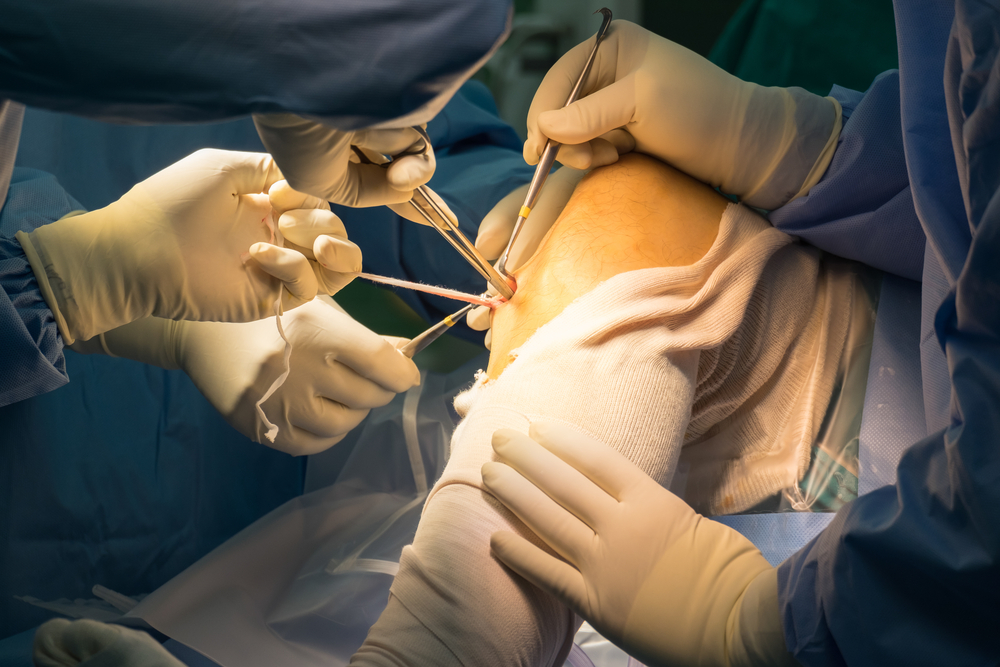
An ACL tear, a common injury among athletes and active individuals, involves the tearing of the anterior cruciate ligament in the knee. ACL tear treatment varies based on the severity of the injury, patient’s activity level, and overall health. For many, ACL tear treatment surgery is recommended to restore knee stability and functionality. This procedure involves reconstructing the torn ligament using a graft, often sourced from the patient’s own body or a donor.
In Chennai, patients have access to some of the best ACL tear treatment options. The best ACL tear treatment in Chennai includes a combination of surgical and non-surgical approaches tailored to individual needs. Non-surgical methods, such as physical therapy and rehabilitation exercises, are suitable for partial tears or less active patients, focusing on strengthening the surrounding muscles and improving knee stability.
However, for complete tears or individuals who engage in high-demand sports,
ACL tear surgery for knee stability is often necessary. This surgery not only repairs the ligament but also ensures the knee can withstand rigorous activities without recurring issues. Chennai’s top orthopedic centers offer advanced ACL tear treatment surgery, employing minimally invasive techniques to reduce recovery time and enhance outcomes. Comprehensive post-operative care and rehabilitation are integral to achieving the best results, allowing patients to return to their active lifestyles with confidence.
Introduction to Acl Tear Treatment
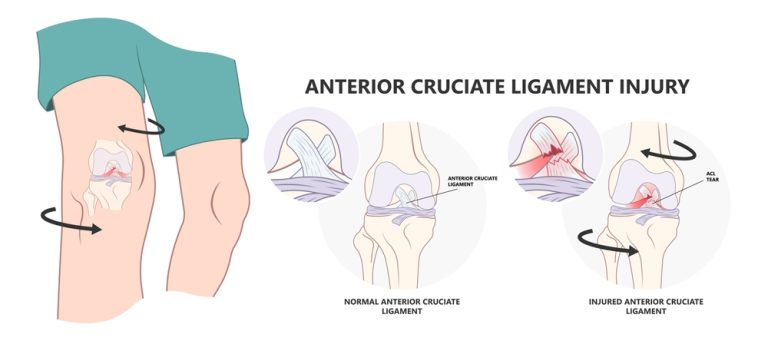
ACL tear treatment has become essential for individuals experiencing a torn anterior cruciate ligament (ACL), a common injury among athletes and active individuals. This condition significantly affects knee stability and mobility, often requiring prompt and effective intervention to restore normal function. In Chennai, the best ACL tear treatment options combine advanced medical technology with personalized care, ensuring optimal recovery outcomes.
The best ACL tear treatment in Chennai typically involves a comprehensive approach, beginning with a thorough diagnosis to assess the extent of the injury. Non-surgical treatments, such as physical therapy, bracing, and lifestyle modifications, are considered for partial tears or less active patients. These treatments focus on strengthening the surrounding muscles, enhancing knee stability, and reducing pain.
For complete tears or highly active individuals, ACL tear surgery is often the recommended course of action. This procedure involves reconstructing the torn ligament using a graft, which can be sourced from the patient’s own body or a donor. Chennai’s top orthopedic surgeons utilize minimally invasive techniques, such as arthroscopy, to perform the surgery with precision, resulting in shorter recovery times and less postoperative discomfort.
Choosing the best ACL tear treatment in Chennai ensures patients receive expert care tailored to their specific needs, enabling them to return to their active lifestyles with confidence and reduced risk of re-injury. Comprehensive rehabilitation programs and continuous follow-up care are integral to achieving the best possible outcomes, making Chennai a leading destination for ACL tear treatment.
Example for Acl Tear Treatment for knee
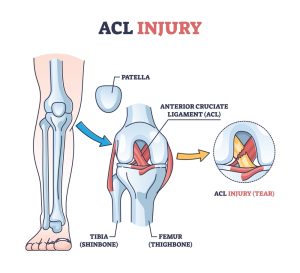
ACL tear treatment for the knee involves a multi-step approach to ensure effective recovery and restore knee functionality. For instance, consider the treatment process for an athlete who suffers a complete ACL tear during a soccer match. Initially, the athlete consults with an orthopedic specialist in Chennai, known for providing the best ACL tear treatment in Chennai.
The treatment begins with a detailed evaluation, including an MRI scan to confirm the extent of the tear. Given the athlete’s active lifestyle and the complete nature of the tear, the specialist recommends ACL reconstruction surgery. The surgery is scheduled, and the patient undergoes preoperative physical therapy to strengthen the surrounding muscles and prepare for the procedure.
During the surgery, the orthopedic surgeon uses a minimally invasive arthroscopic technique to replace the torn ligament with a graft, either from the patient’s hamstring or a donor. This advanced surgical method reduces recovery time and minimizes pain. Post-surgery, the athlete is enrolled in a comprehensive rehabilitation program. The program includes physical therapy sessions focused on gradually restoring range of motion, strengthening the knee, and eventually reintroducing sport-specific activities.
Throughout the recovery process, regular follow-up appointments ensure the knee heals properly and the patient regains full functionality. This structured and personalized approach exemplifies the best ACL tear treatment in Chennai, allowing the athlete to return to the field with confidence and stability.
Our ACL Tear Services
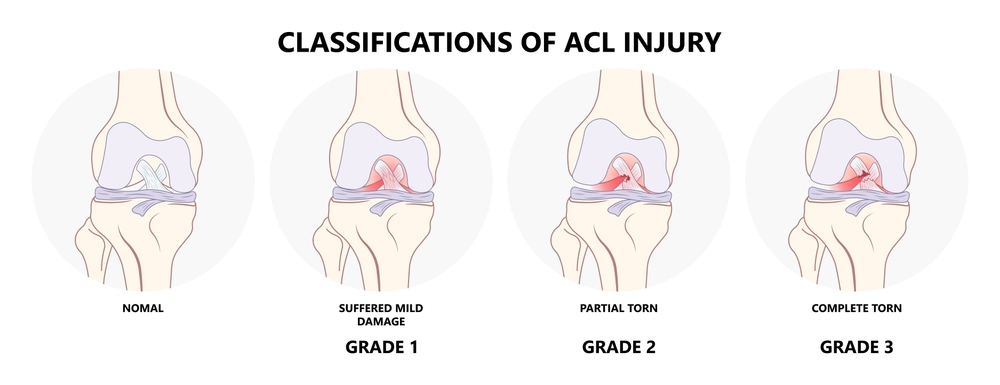
At our clinic, we offer comprehensive ACL tear services designed to provide the highest standard of care and ensure optimal recovery for our patients. Our approach is patient-centered, combining advanced medical technology with personalized treatment plans tailored to the unique needs of each individual.
From the moment you step into our clinic, you will receive expert evaluation and diagnosis. Our team of experienced orthopedic specialists uses state-of-the-art imaging techniques to accurately assess the severity of your ACL tear. Based on this evaluation, we develop a customized treatment plan that may include both non-surgical and surgical options.
For partial tears or less active patients, we emphasize non-surgical treatments such as physical therapy, bracing, and lifestyle modifications. Our skilled physical therapists work closely with you to strengthen the surrounding muscles, enhance knee stability, and alleviate pain.
For more severe cases or highly active individuals, we offer ACL reconstruction surgery. Our surgeons are proficient in minimally invasive arthroscopic techniques, ensuring precision and reducing recovery times. Post-surgery, we provide a comprehensive rehabilitation program that focuses on gradually restoring range of motion, strength, and functionality.
Choosing our ACL tear services means benefiting from continuous follow-up care, ensuring your knee heals properly and reducing the risk of re-injury. We are committed to helping you return to your active lifestyle with confidence and improved knee stability.
Acl Tear Causes & the Problem Solved:
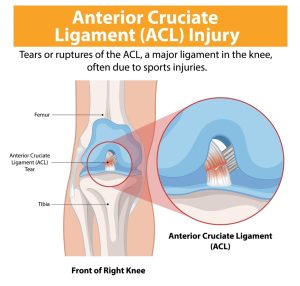
An ACL tear is a common knee injury, particularly among athletes involved in high-intensity sports like soccer, basketball, and skiing. The anterior cruciate ligament (ACL) plays a crucial role in stabilizing the knee joint. When this ligament tears, it can significantly impact mobility and quality of life. Understanding the causes and addressing the symptoms of ACL tear in knee are essential for effective treatment.
The most common causes of ACL tears include sudden stops or changes in direction, awkward landings from jumps, and direct blows to the knee. These actions can overstress the ligament, leading to partial or complete tears. Symptoms of ACL tear in knee are often immediate and include a loud popping sound at the time of injury, severe pain, rapid swelling, and a feeling of instability or “giving way” when bearing weight on the affected leg.
Solving the problem of an ACL tear involves a comprehensive treatment approach. Initially, rest, ice, compression, and elevation (RICE) are recommended to manage pain and swelling. Accurate diagnosis through physical examination and imaging techniques like MRI confirms the extent of the tear. For partial tears or less active individuals, physical therapy to strengthen surrounding muscles and improve stability is often effective.
However, for complete tears or active individuals, ACL reconstruction surgery is typically necessary. This procedure replaces the torn ligament with a graft, restoring knee stability and function. Post-surgery rehabilitation focuses on gradually restoring range of motion, strength, and overall knee functionality. By addressing the symptoms of ACL tear in knee promptly and effectively, patients can return to their active lifestyles with improved knee health and stability.
Key Features of our Acl Tear services
Our ACL tear services are designed with a focus on delivering exceptional care and promoting effective recovery. Here are the key features that set our services apart:
Expert Diagnosis and Personalized Treatment Plans: Our team of experienced orthopedic specialists utilizes advanced imaging techniques to provide an accurate diagnosis. This ensures that each patient receives a personalized treatment plan tailored to their specific needs and the severity of their ACL tear.
Comprehensive Non-Surgical Options: For partial tears or less active individuals, we offer non-surgical treatments such as physical therapy, bracing, and lifestyle modifications. These options aim to strengthen the muscles around the knee, enhance stability, and alleviate pain without the need for surgery.
Advanced Surgical Techniques: For more severe cases, our surgeons are proficient in minimally invasive arthroscopic procedures. This state-of-the-art technique reduces recovery time, minimizes pain, and promotes faster healing by using small incisions and precise surgical methods.
Structured Rehabilitation Programs: Post-surgery, our comprehensive rehabilitation programs are designed to restore range of motion, strength, and functionality. Our skilled physical therapists work closely with patients to ensure a smooth and effective recovery process.
Continuous Follow-Up Care: We prioritize long-term recovery by offering continuous follow-up care. This helps monitor the healing process, prevent re-injury, and ensure that patients regain full knee functionality.
Benefits of ACL Tear Treatment: Our ACL tear services provide numerous benefits, including pain relief, restored knee stability, improved mobility, and a faster return to daily activities and sports. By offering expert care and advanced treatment options, we help patients achieve optimal recovery and maintain an active lifestyle.
ACL Tear Treatment
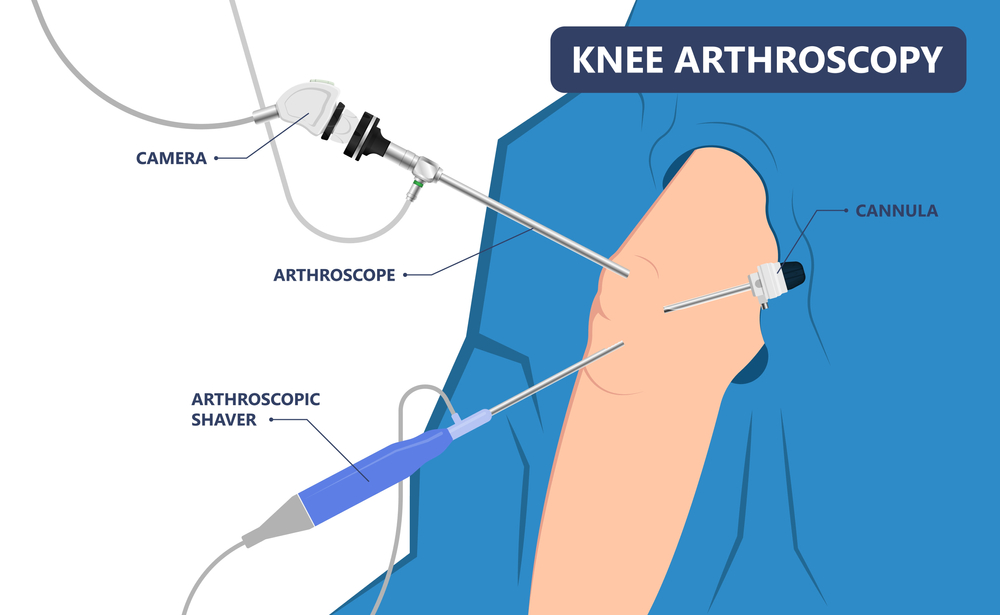
Process & Methodology:
Our ACL tear treatment process is designed to ensure a comprehensive and effective recovery for each patient. We follow a structured approach that combines advanced medical technology, personalized care, and continuous support to address the unique needs of every individual.
Consultation:
The journey begins with a thorough consultation. During this initial visit, our experienced orthopedic specialists will discuss your symptoms, medical history, and any previous knee injuries. This conversation helps us understand the impact of the ACL tear on your daily activities and goals.
Diagnosis:
Accurate diagnosis is crucial for effective treatment. We use state-of-the-art imaging techniques, such as MRI and X-rays, to confirm the extent of the ACL tear. A physical examination is also conducted to assess knee stability, range of motion, and overall joint health. This comprehensive diagnostic process ensures a precise understanding of your condition.
Treatment Plan:
Based on the diagnosis, we develop a personalized treatment plan tailored to your specific needs. For partial tears or less active patients, non-surgical treatments like physical therapy, bracing, and lifestyle modifications may be recommended. These methods focus on strengthening the surrounding muscles and enhancing knee stability.
Surgery (if needed):
For complete tears or highly active individuals, ACL reconstruction surgery may be necessary. Our surgeons are proficient in minimally invasive arthroscopic techniques, which involve using small incisions to replace the torn ligament with a graft. This advanced surgical method minimizes recovery time, reduces pain, and promotes faster healing.
Rehabilitation:
Post-surgery, a comprehensive rehabilitation program is essential for restoring knee function. Our skilled physical therapists work closely with you to develop a structured rehabilitation plan. This includes exercises to improve range of motion, strength, and stability, ensuring a smooth and effective recovery process.
Follow-Up: Regular check-ups to monitor progress:
Continuous follow-up care is a critical component of our ACL tear treatment. Regular check-ups allow us to monitor your progress, address any concerns, and adjust your treatment plan as needed. These appointments ensure that your knee heals properly and that you regain full functionality, reducing the risk of re-injury.
By following this detailed and patient-centered approach, we provide comprehensive ACL tear treatment that helps you achieve optimal recovery and return to your active lifestyle with confidence.
Use Cases for ACL Tear Treatment:
Athletes recovering from an ACL tear:
Athletes often face ACL tears due to the high-impact and intense nature of their sports. Our ACL tear treatment services are tailored to address their specific needs, ensuring a swift and effective recovery. We provide comprehensive diagnostic evaluations and personalized treatment plans that include both non-surgical and surgical options. Our advanced surgical techniques, combined with a structured rehabilitation program, help athletes regain their knee strength, stability, and flexibility, allowing them to return to their sports with confidence and reduced risk of re-injury.
Individuals with knee instability:
Knee instability can significantly impact daily activities and overall quality of life. For individuals experiencing knee instability due to an ACL tear, we offer a range of treatment options designed to restore stability and improve knee function. Our non-surgical treatments, such as physical therapy and bracing, focus on strengthening the muscles around the knee to enhance stability. For more severe cases, ACL reconstruction surgery may be recommended to provide long-term relief and functionality.
Patients requiring ACL reconstruction surgery:
Patients with complete ACL tears or those who lead highly active lifestyles may require ACL reconstruction surgery. Our minimally invasive arthroscopic surgical techniques ensure precise ligament reconstruction, minimizing recovery time and postoperative pain. We create personalized surgical plans to meet each patient’s unique needs, followed by a detailed rehabilitation program to facilitate full recovery and restore knee functionality.
Post-surgery rehabilitation for ACL tear:
Post-surgery rehabilitation is critical for the success of ACL tear treatment. Our specialized rehabilitation programs are designed to guide patients through the recovery process, focusing on gradually restoring range of motion, strength, and overall knee stability. Our skilled physical therapists work closely with patients to ensure adherence to the rehabilitation plan, addressing any challenges that arise and ensuring optimal recovery outcomes.
Long-term knee stability improvement:
For long-term knee stability improvement, our services include continuous follow-up care and maintenance programs. These programs are essential for monitoring progress and preventing future injuries. We offer ongoing physical therapy sessions, lifestyle modification advice, and regular check-ups to ensure the knee remains stable and functional. Our goal is to help patients maintain a high quality of life and engage in their desired activities without the fear of recurrent knee instability.
By addressing these diverse use cases, our ACL tear treatment services provide comprehensive care that caters to the unique needs of athletes, individuals with knee instability, patients undergoing ACL reconstruction surgery, and those seeking long-term knee stability improvement.
Choosing our ACL tear treatment in Chennai offers numerous benefits that ensure a comprehensive and effective recovery process for our patients. Here are some key advantages:
Expert Diagnosis and Personalized Care: Our team of highly experienced orthopedic specialists uses advanced diagnostic tools, such as MRI and X-rays, to accurately assess the extent of your ACL tear. This precise diagnosis allows us to create a personalized treatment plan tailored to your specific needs and lifestyle.
Comprehensive Treatment Options: We offer a range of treatment options, from non-surgical approaches like physical therapy and bracing to advanced surgical techniques. Our minimally invasive arthroscopic surgeries minimize recovery time and reduce pain, promoting faster healing and a quicker return to daily activities.
Specialized Rehabilitation Programs: Post-surgery rehabilitation is crucial for restoring knee function. Our skilled physical therapists develop structured rehabilitation programs that focus on improving range of motion, strength, and stability. This comprehensive approach ensures a smooth and effective recovery process.
Continuous Follow-Up Care: We prioritize long-term recovery by providing continuous follow-up care. Regular check-ups allow us to monitor your progress, address any concerns, and adjust your treatment plan as needed. This ongoing support ensures that your knee heals properly and reduces the risk of re-injury.
State-of-the-Art Facilities: Our clinic in Chennai is equipped with state-of-the-art facilities and the latest medical technology. This ensures that you receive the highest standard of care throughout your treatment journey.
Patient-Centered Approach: We are committed to providing compassionate and patient-centered care. Our team works closely with you, offering guidance, support, and education to help you make informed decisions about your treatment.
By choosing our ACL tear treatment in Chennai, you benefit from expert care, advanced treatment options, and a dedicated team focused on helping you achieve optimal recovery and regain your active lifestyle.
Our Testimonials

Rahul M., Athlete
“I can’t express how grateful I am for the incredible care I received for my ACL tear at this clinic in Chennai. As a professional athlete, my career depends on my physical health, and I was devastated when I tore my ACL during a game. From the initial consultation to the advanced diagnostic tests, I knew I was in expert hands. The personalized treatment plan they created for me was top-notch, and the minimally invasive arthroscopic surgery was a game-changer. The structured rehabilitation program was intensive but exactly what I needed to regain my strength and stability. The continuous follow-up care ensured I was always progressing well. Thanks to their exceptional care, I am back on the field stronger than ever. I highly recommend their ACL tear treatment to anyone in need.”
“I had been struggling with knee instability for years, and when I finally tore my ACL, I knew I needed the best treatment available. Choosing this clinic in Chennai was the best decision I could have made. The team of orthopedic specialists provided a thorough diagnosis and explained every step of the treatment process. I opted for ACL reconstruction surgery, and the minimally invasive technique they used made my recovery so much easier. The post-surgery rehabilitation program was tailored to my needs and helped me regain my knee’s full functionality. The continuous follow-up care was exceptional, ensuring that my recovery was on track. Now, my knee is more stable than ever, and I can enjoy my daily activities without fear of re-injury. I can’t thank the team enough for their outstanding care and support.”

Priya S., Fitness Enthusiast

Priya S., Fitness Enthusiast
“I had been struggling with knee instability for years, and when I finally tore my ACL, I knew I needed the best treatment available. Choosing this clinic in Chennai was the best decision I could have made. The team of orthopedic specialists provided a thorough diagnosis and explained every step of the treatment process. I opted for ACL reconstruction surgery, and the minimally invasive technique they used made my recovery so much easier. The post-surgery rehabilitation program was tailored to my needs and helped me regain my knee’s full functionality. The continuous follow-up care was exceptional, ensuring that my recovery was on track. Now, my knee is more stable than ever, and I can enjoy my daily activities without fear of re-injury. I can’t thank the team enough for their outstanding care and support.”
Why to Choose Us for ACL tear surgery in Chennai
Our ACL tear services are designed with a focus on delivering exceptional care and promoting effective recovery. Here are the key features that set our services apart:
Expert Diagnosis and Personalized Treatment Plans: Our team of experienced orthopedic specialists utilizes advanced imaging techniques to provide an accurate diagnosis. This ensures that each patient receives a personalized treatment plan tailored to their specific needs and the severity of their ACL tear.
Comprehensive Non-Surgical Options: For partial tears or less active individuals, we offer non-surgical treatments such as physical therapy, bracing, and lifestyle modifications. These options aim to strengthen the muscles around the knee, enhance stability, and alleviate pain without the need for surgery.
Advanced Surgical Techniques: For more severe cases, our surgeons are proficient in minimally invasive arthroscopic procedures. This state-of-the-art technique reduces recovery time, minimizes pain, and promotes faster healing by using small incisions and precise surgical methods.
Structured Rehabilitation Programs: Post-surgery, our comprehensive rehabilitation programs are designed to restore range of motion, strength, and functionality. Our skilled physical therapists work closely with patients to ensure a smooth and effective recovery process.
Continuous Follow-Up Care: We prioritize long-term recovery by offering continuous follow-up care. This helps monitor the healing process, prevent re-injury, and ensure that patients regain full knee functionality.
Benefits of ACL Tear Treatment: Our ACL tear services provide numerous benefits, including pain relief, restored knee stability, improved mobility, and a faster return to daily activities and sports. By offering expert care and advanced treatment options, we help patients achieve optimal recovery and maintain an active lifestyle.
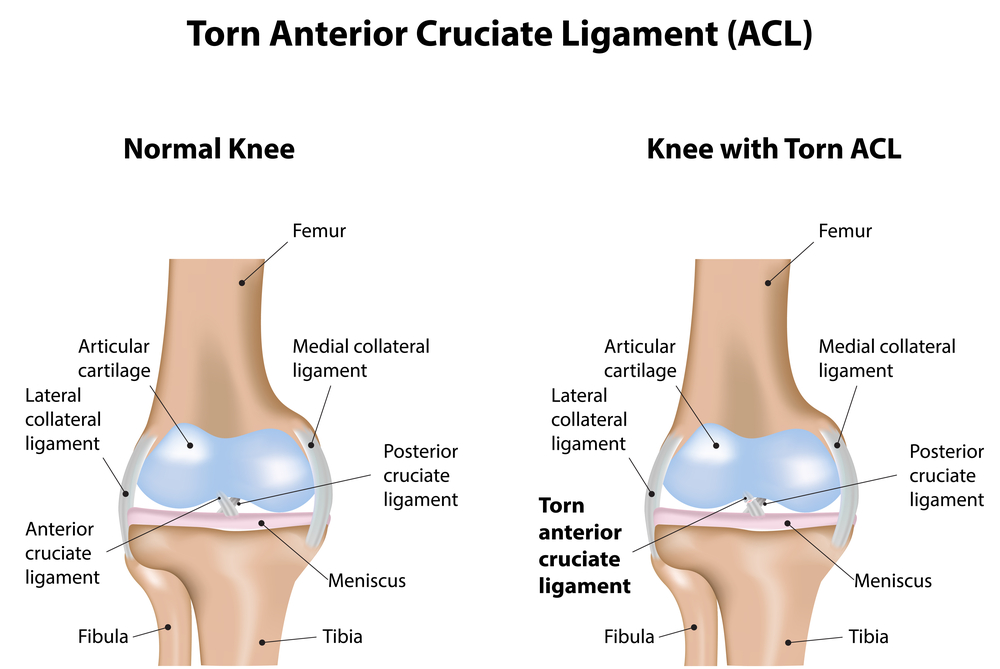
An ACL (anterior cruciate ligament) tear typically presents with a distinct set of symptoms that indicate significant injury to the knee joint. Common symptoms include sudden and severe pain at the time of injury, often accompanied by a popping or snapping sensation. Swelling usually develops rapidly within the first few hours after the injury due to bleeding within the knee joint.
Individuals with an ACL tear often experience instability or a feeling that the knee is giving way, especially during weight-bearing activities or changes in direction. This instability can make activities like walking, running, or participating in sports challenging and uncomfortable. Some may also notice a noticeable loss of range of motion in the knee joint, particularly difficulty in fully straightening or bending the knee.
Another common symptom is tenderness along the joint line of the knee, which may be accompanied by bruising or discoloration around the knee area. In some cases, individuals may find it difficult to bear weight on the affected leg, particularly in the immediate aftermath of the injury.
Recognizing these symptoms is crucial for seeking prompt medical attention and accurate diagnosis, leading to appropriate treatment to restore knee function and prevent further complications.
Diagnosing an ACL (anterior cruciate ligament) tear typically involves a combination of clinical evaluation, imaging studies, and specialized tests. Initially, a thorough medical history is taken to understand the circumstances of the injury and any previous knee issues. The healthcare provider then conducts a physical examination, focusing on the knee’s stability, range of motion, and tenderness.
Imaging studies such as MRI (magnetic resonance imaging) are crucial for confirming the diagnosis of an ACL tear. MRI provides detailed images of the knee structures, including the ligaments, cartilage, and surrounding tissues. It helps identify the extent of the tear and any associated injuries, such as meniscus tears or bone bruises.
In some cases, X-rays may be performed to rule out fractures or assess the alignment of the knee joint. Specialized tests, such as the Lachman test or anterior drawer test, may also be conducted during the physical examination to assess the integrity of the ACL and other knee ligaments.
A comprehensive diagnostic approach ensures an accurate assessment of the ACL tear, guiding healthcare providers in developing an appropriate treatment plan tailored to the patient’s specific needs and lifestyle. Early and accurate diagnosis is crucial for initiating timely treatment and optimizing outcomes for individuals with an ACL tear.
Non-surgical treatment options for an ACL (anterior cruciate ligament) tear can be effective for individuals with partial tears, lower activity levels, or those not requiring high-demand knee stability for their lifestyle. These treatments focus on reducing pain, improving knee stability, and enhancing overall function.
Physical Therapy: One of the primary non-surgical treatments is physical therapy. A structured physical therapy program aims to strengthen the muscles around the knee, particularly the quadriceps and hamstrings, to compensate for the injured ACL. This helps improve knee stability and function.
Bracing: Knee braces can provide external support and stability, reducing the risk of further injury. Functional braces are commonly used to protect the knee during activities and provide confidence to patients.
Activity Modification: Adjusting daily activities to avoid those that put excessive strain on the knee can help manage symptoms and prevent aggravation of the injury. Low-impact exercises, such as swimming or cycling, are often recommended to maintain fitness without stressing the knee.
Medications: Non-steroidal anti-inflammatory drugs (NSAIDs) can help reduce pain and swelling associated with an ACL tear. In some cases, corticosteroid injections may be used to manage inflammation.
Lifestyle Adjustments: Weight management and a healthy diet can contribute to overall knee health and reduce the load on the injured knee.
By combining these non-surgical approaches, many individuals can effectively manage their ACL tear symptoms, improve knee stability, and maintain an active lifestyle without the need for surgery. However, the suitability of non-surgical treatments depends on the severity of the tear and the patient’s specific circumstances, and a healthcare professional should guide these decisions.
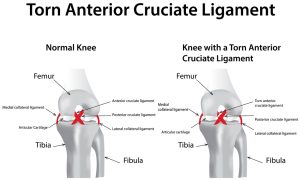
ACL (anterior cruciate ligament) surgery is recommended in several scenarios where non-surgical treatments may not be sufficient to restore knee stability and function. Here are the primary situations in which ACL surgery is typically advised:
Severe Tears: For individuals with complete or severe ACL tears, especially when the ligament is fully torn and cannot heal on its own, surgery is often necessary to restore stability and function to the knee.
Active Lifestyle: Athletes and individuals who engage in high-demand sports or activities that require significant knee stability, such as soccer, basketball, or skiing, are prime candidates for ACL surgery. Surgery helps these individuals regain the strength and stability needed to perform at high levels and reduce the risk of further injury.
Instability: When patients experience frequent episodes of knee instability or the knee “giving way” during routine activities, ACL surgery is recommended to restore the knee’s stability and prevent further damage to the joint.
Associated Injuries: If the ACL tear is accompanied by other injuries, such as meniscus tears, cartilage damage, or collateral ligament injuries, surgery may be necessary to address all the issues simultaneously for optimal recovery.
Failure of Non-Surgical Treatments: If non-surgical treatments such as physical therapy, bracing, and activity modification do not sufficiently improve knee stability and function, surgery becomes a viable option.
By addressing these conditions through ACL reconstruction surgery, patients can achieve improved knee stability, function, and quality of life, enabling them to return to their desired activities with confidence.
ACL tear surgery, typically known as ACL reconstruction, involves replacing the torn anterior cruciate ligament with a graft to restore knee stability and function. Here’s a detailed overview of what the procedure involves:
Preoperative Preparation
Before the surgery, a thorough medical evaluation is conducted, including physical examinations and imaging studies like MRI to assess the extent of the tear and any associated injuries. The patient is also advised on preoperative instructions, such as fasting and stopping certain medications.
Surgical Procedure
Anesthesia: The surgery is usually performed under general anesthesia, but regional anesthesia (spinal or epidural) may also be used based on the patient’s health and preferences.
Arthroscopy: The surgeon makes small incisions around the knee and inserts an arthroscope—a small camera—to get a clear view of the inside of the knee joint on a monitor.
Graft Harvesting: The surgeon harvests a graft to replace the torn ACL. This graft can be taken from the patient’s own body (autograft), typically from the patellar tendon, hamstring tendon, or quadriceps tendon. Alternatively, a donor graft (allograft) may be used.
Graft Placement: The surgeon cleans out the remnants of the torn ACL. Then, tunnels are drilled in the femur (thighbone) and tibia (shinbone) where the new ligament will be placed. The graft is threaded through these tunnels and secured with screws or other fixation devices to hold it in place.
Closing Incisions: The incisions are then closed with sutures or surgical staples, and the knee is bandaged.
Postoperative Care
Recovery Room: After surgery, the patient is monitored in the recovery room until the anesthesia wears off.
Rehabilitation: A structured rehabilitation program is crucial for recovery. This includes physical therapy to restore range of motion, strength, and knee stability. The rehabilitation process can take several months, typically ranging from 6 to 9 months.
Follow-Up
Regular follow-up appointments are scheduled to monitor healing, adjust the rehabilitation program, and ensure the knee is recovering properly. These appointments are vital for assessing progress and addressing any complications early on.
By following this comprehensive surgical approach, ACL reconstruction aims to restore knee stability and function, allowing patients to return to their normal activities and sports with reduced risk of re-injury.
The recovery time for ACL (anterior cruciate ligament) surgery varies depending on factors such as the severity of the injury, the specific surgical technique used, the patient’s overall health, and their commitment to rehabilitation. Generally, the recovery process can be broken down into several stages:
Immediate Post-Surgery (0-2 weeks):
After surgery, the knee is usually swollen and painful. Patients are advised to rest, ice the knee, and keep it elevated to reduce swelling.
Crutches are typically used to avoid putting weight on the knee.
Gentle range-of-motion exercises and physical therapy usually begin within a few days to maintain mobility and prevent stiffness.
Early Rehabilitation (2-6 weeks):
Physical therapy intensifies, focusing on regaining knee motion and gradually restoring strength.
Weight-bearing activities are slowly reintroduced, often with the help of a brace for support.
Intermediate Rehabilitation (6-12 weeks):
Strengthening exercises for the quadriceps, hamstrings, and surrounding muscles become more rigorous.
Patients work on improving balance and proprioception to enhance knee stability.
Advanced Rehabilitation (3-6 months):
High-intensity exercises, including running and jumping, are introduced as strength and stability improve.
Sport-specific training may begin if the patient is an athlete.
Full Recovery (6-12 months):
Most patients achieve a significant recovery around the 6-month mark, but complete return to pre-injury activity levels, especially for athletes, can take up to 9-12 months.
Ongoing physical therapy and conditioning are crucial to ensure full knee function and prevent re-injury.
Throughout the recovery process, regular follow-up appointments with the surgeon and physical therapist are essential to monitor progress and make necessary adjustments to the rehabilitation plan. Patience and adherence to the prescribed rehabilitation program are key to a successful recovery from ACL surgery.
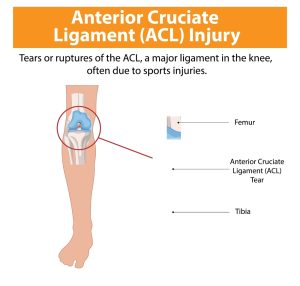 Yes, athletes can fully recover from an ACL (anterior cruciate ligament) tear, but the process requires dedication, time, and adherence to a comprehensive rehabilitation program. Modern surgical techniques and advancements in sports medicine have significantly improved the outcomes for athletes with ACL tears.
Yes, athletes can fully recover from an ACL (anterior cruciate ligament) tear, but the process requires dedication, time, and adherence to a comprehensive rehabilitation program. Modern surgical techniques and advancements in sports medicine have significantly improved the outcomes for athletes with ACL tears.
Successful Surgery and Rehabilitation:
The first step towards recovery is a successful ACL reconstruction surgery, often followed by a meticulously designed rehabilitation program. This program focuses on restoring knee strength, stability, and range of motion. Athletes undergo progressive phases of rehabilitation, starting with basic mobility exercises and gradually advancing to sport-specific drills.
Commitment and Patience:
Recovery typically spans 6 to 12 months. Athletes need to be patient and committed to their rehabilitation regimen. Following the physical therapist’s guidance, avoiding premature return to sports, and consistently performing prescribed exercises are crucial for optimal recovery.
Psychological Recovery:
Mental resilience is equally important. Overcoming fear of re-injury and regaining confidence in the knee’s stability are vital for a successful return to competitive sports. Support from sports psychologists and counselors can be beneficial.
Long-term Conditioning:
Even after returning to sports, ongoing conditioning and strengthening exercises are essential to maintain knee health and prevent future injuries.
Case Studies and Success Stories:
Many professional athletes, including soccer players, basketball players, and skiers, have successfully returned to high-level competition post-ACL surgery. Their success stories highlight the effectiveness of modern treatment protocols and the possibility of a full recovery.
In summary, with the right medical care, rehabilitation, and mental approach, athletes can fully recover from an ACL tear and return to their pre-injury performance levels.
ACL (anterior cruciate ligament) tear surgery, while generally successful, carries certain risks and potential complications, as with any surgical procedure. Understanding these risks helps patients make informed decisions and take appropriate measures to minimize them. Here are some common risks associated with ACL tear surgery:
Infection: Post-surgical infection is a risk, albeit low. Proper sterilization, antibiotic administration, and postoperative wound care can reduce this risk significantly.
Bleeding and Blood Clots: There can be minor bleeding during or after the surgery. In rare cases, deep vein thrombosis (DVT) or blood clots can form, especially in the leg, posing serious health risks if they travel to the lungs.
Knee Stiffness and Loss of Motion: Some patients may experience stiffness or difficulty regaining full range of motion in the knee, often due to scar tissue formation. Rigorous physical therapy is crucial to prevent this complication.
Graft Failure or Re-injury: The new graft can fail, or the knee can suffer another injury. This can be due to premature return to high-intensity activities or insufficient rehabilitation.
Nerve or Blood Vessel Damage: Although rare, there is a risk of injury to the surrounding nerves or blood vessels during surgery, which can lead to numbness, weakness, or other complications.
Chronic Pain: Some patients might experience ongoing pain around the knee, which can be due to various factors including surgical technique, rehabilitation issues, or individual pain response.
Arthrofibrosis: This condition involves excessive scar tissue formation leading to pain and limited knee movement, often requiring further treatment.
Patellar Pain or Fracture: If the patellar tendon is used for the graft, there might be pain at the front of the knee or, in rare cases, a fracture of the patella.
Patients should discuss these risks with their surgeon, adhere strictly to postoperative instructions, and engage fully in rehabilitation to mitigate these risks and promote a successful recovery.
Preventing ACL (anterior cruciate ligament) injuries requires a combination of strength training, proper technique, and awareness.
Here are some effective strategies to reduce the risk of future ACL injuries:
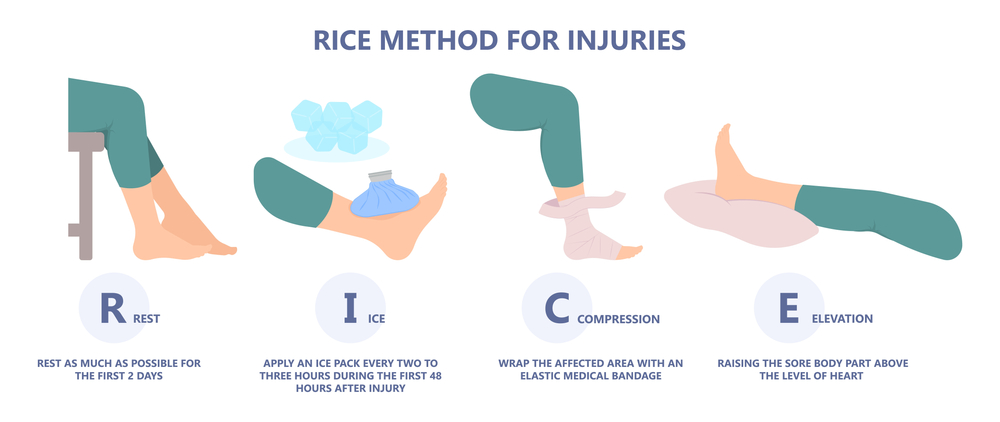
Strength Training:
Muscle Strengthening: Focus on strengthening the muscles around the knee, particularly the quadriceps, hamstrings, and glutes. Stronger muscles provide better support and stability to the knee joint.
Core Stability: A strong core helps maintain proper balance and body mechanics, reducing stress on the knees.
Flexibility and Conditioning:
Stretching: Regular stretching exercises improve flexibility, reducing the risk of ligament strains and tears.
Conditioning: Maintain overall physical fitness to ensure muscles are conditioned and less prone to fatigue, which can lead to improper movements and injuries.
Proper Technique:
Jumping and Landing: Learn and practice proper techniques for jumping and landing. Focus on landing softly with knees bent and aligned over the toes to reduce impact forces on the knees.
Cutting and Pivoting: Use correct techniques for cutting and pivoting during sports. Avoid sudden, sharp movements that can strain the ACL.
Use of Protective Gear:
Knee Braces: Wearing knee braces, especially during high-risk activities, can provide additional support and stability.
Training Programs:
Injury Prevention Programs: Participate in ACL injury prevention programs that include plyometrics, balance training, and neuromuscular conditioning. These programs are designed to enhance knee stability and reduce injury risk.
Warm-Up and Cool-Down:
Proper Warm-Up: Always warm up before engaging in sports or physical activities. A proper warm-up increases blood flow to the muscles and prepares them for intense activity.
Cool-Down: Cooling down helps reduce muscle stiffness and aids in recovery.
Awareness and Education:
Education: Educate yourself about the risks and proper techniques for your specific sport or activity. Understanding how injuries occur can help you avoid risky movements.
By incorporating these preventive measures into your training routine, you can significantly reduce the risk of ACL injuries and maintain knee health for the long term.
